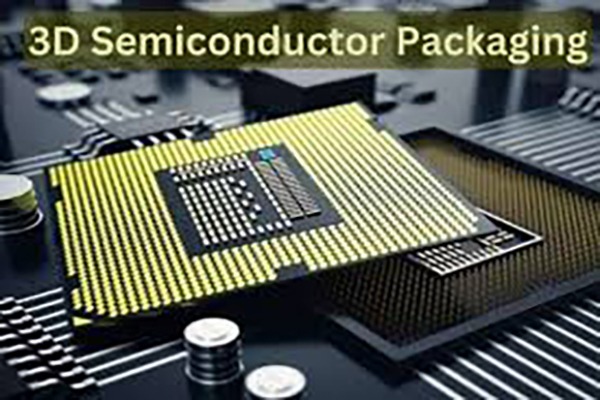In today’s fast-paced technological landscape, the demand for smaller, more powerful electronic devices continues to grow at an exponential rate. This surge in miniaturization has significantly influenced the global 3D semiconductor packaging market, which provides a compact, efficient, and high-performance solution for the modern electronics industry. As electronic devices become more compact, 3D packaging has become a vital technology that integrates multiple chips into a single package, offering various advantages over traditional 2D packaging.

The global 3D semiconductor packaging market size reached US$ 11 billion in 2023 and is projected to hit around US$ 57.19 billion by 2034, expanding at a CAGR of 16.17% during the forecast period from 2024 to 2033.
Market Dominance and Regional Insights
The 3D semiconductor packaging market has witnessed remarkable growth in recent years, with Asia Pacific leading the market in 2023. The region’s dominance is attributed to the presence of major semiconductor manufacturers in countries like China, Japan, and South Korea. These nations have capitalized on their advanced manufacturing capabilities and are playing a pivotal role in shaping the future of 3D semiconductor packaging.
Meanwhile, North America is expected to experience significant growth during the forecast period. This surge is largely driven by increasing demand for high-performance computing, data centers, and the automotive sector. The United States remains a key player in the development and adoption of cutting-edge semiconductor technologies, and the 3D through-silicon via (TSV) technology is poised to dominate the market.
Key Technologies in 3D Packaging:
- Through-Silicon Via (TSV): This technology enables vertical electrical connections through silicon wafers, enhancing bandwidth and reducing power consumption.
- Wafer-Level Packaging (WLP): WLP integrates the chip directly into the package at the wafer level, offering cost-effective manufacturing and improved performance.
- System-in-Package (SiP): SiP integrates multiple semiconductor devices into a single package, offering a highly flexible solution for compact device designs.
- Chip-on-Wafer (CoW) and Wafer-on-Wafer (WoW): These technologies stack chips directly on top of wafers, further increasing packaging density.
Benefits of 3D Semiconductor Packaging
1. Space Efficiency and Miniaturization
One of the primary advantages of 3D packaging is its ability to reduce the overall size of electronic devices. By stacking multiple chips vertically, 3D packaging minimizes the footprint required for each component. This is particularly important for compact devices such as smartphones, tablets, and wearables, where space is limited but performance requirements are high.
2. Performance Improvements
3D semiconductor packaging enhances device performance by reducing the distance between chips. Shorter interconnections result in lower latency and higher data bandwidth, making 3D packaging an ideal solution for applications that demand high processing power, such as cloud computing, artificial intelligence, and machine learning.
3. Thermal Management
As devices become smaller and more powerful, managing heat dissipation becomes a significant challenge. 3D packaging helps address this issue by improving thermal management. The vertical arrangement of chips allows for better heat distribution, preventing overheating and ensuring the longevity of devices.
Market Segmentation by Technology, Material, and Industrial Verticals
In terms of technology, the 3D Through-Silicon Via (TSV) segment dominated the market in 2023. TSV technology is favored for its ability to support high-speed data transfer and low power consumption. This technology is expected to maintain its leadership position during the forecast period due to its scalability and efficiency.
From a materials perspective, the organic substrate segment is anticipated to grow at a significant rate during the forecast period. Organic substrates are widely used in 3D semiconductor packaging due to their cost-effectiveness and reliable performance in handling the thermal stresses generated by densely packed chips.
In terms of industrial verticals, the automotive and transportation sector accounted for the largest share of the 3D semiconductor packaging market in 2023. With the growing adoption of autonomous vehicles, electric vehicles, and connected car technologies, the demand for high-performance semiconductor solutions has surged, making the automotive sector a crucial market driver. The demand for miniaturized, high-performance electronic devices is driving the growth of the 3D semiconductor packaging market. As technology advances and industries seek more compact, efficient, and powerful solutions, 3D packaging will play a pivotal role in shaping the future of semiconductor design and manufacturing.













